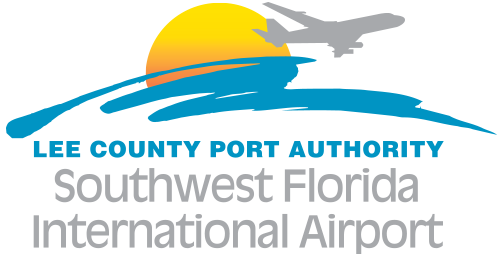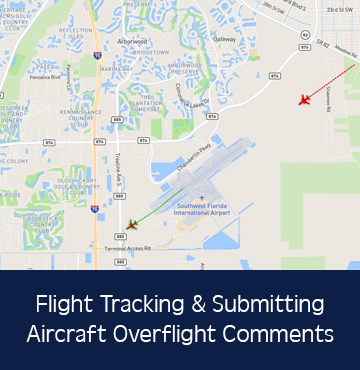Aircraft Overflight Program
Planning and site selection for the airport began in 1973 and on May 14, 1983, Southwest Florida International Airport (RSW) officially opened its doors. RSW served more than 9.4 million passengers in 2018 and is one of the top 50 U.S. airports for passenger traffic. The airport is served by 16 airlines and provides more than $9.4 billion in regional economic impact each year.
Southwest Florida International Airport is managed by the Lee County Port Authority (LCPA) and is responsible for the overall operation of the airport and its infrastructure. However, LCPA does not control aircraft in the air or on the ground. The safe and efficient control of aircraft is the responsibility of the Federal Aviation Administration and the pilot who operates the aircraft.
The Board of Port Commissioners has been very proactive in evaluating the effects of aircraft overflights on surrounding communities and, as a result, has directed LCPA to prepare noise studies for RSW approximately every five years. During the 2013 Part 150 Noise Study, the FAA concluded RSW does not have a noise problem based on federal criteria, which considers aircraft noise levels around the airport over an FAA-determined analysis period.
On April 7, 2014, the Port Authority received an FAA Record of Approval for the 2013 Part 150 Noise Study. The purpose of the study was to identify trends in noise exposure from aircraft and to provide a means to voluntarily implement measures that will benefit the public. Click 2013 Part 150 Study to obtain the most current available information.
Background
Prior to the opening of RSW in May 1983, commercial air service operated from Page Field near downtown Fort Myers. The growth experienced in Southwest Florida during the 1970s brought increased air traffic and passenger activity beyond the capabilities of Page Field. Limited capacity and incompatible land use near Page Field drove the need for a new airport.
One key reason RSW was sited at the current location was the need to protect the citizens of Lee County from aircraft overflight. In an effort to minimize the long-term impact of aircraft overflight at the new airport, the Lee County Port Authority sponsored a Federal Aviation Regulations (FAR) Part 150 Noise Compatibility Study. Following the approval of the study in 1990, land use control measures, including Airport Noise Zones were developed and incorporated in the Lee County Comprehensive Plan and the Land Development Code. Since 1990, LCPA has conducted three additional Part 150 noise studies (1995, 2006 and 2013) in order to minimize the long-term impacts of aircraft noise to a growing community.
For more information, click the links below:







